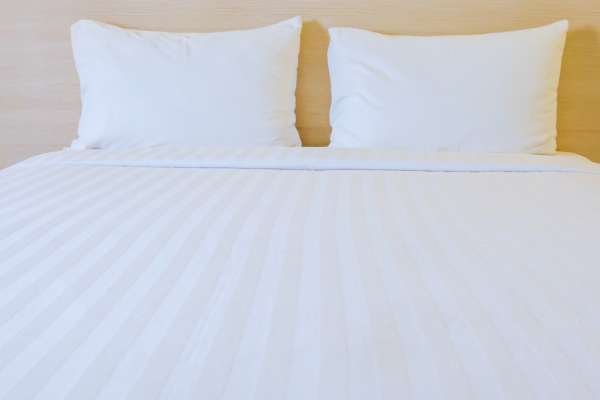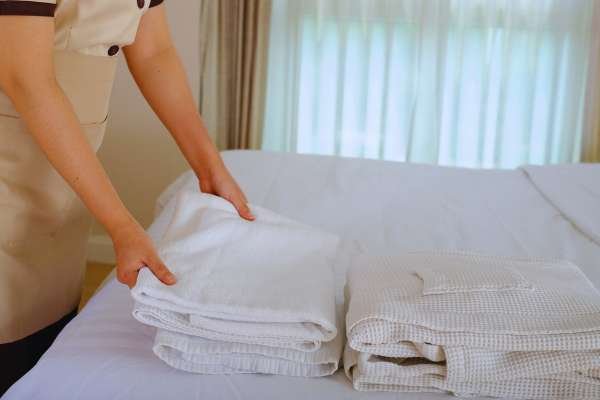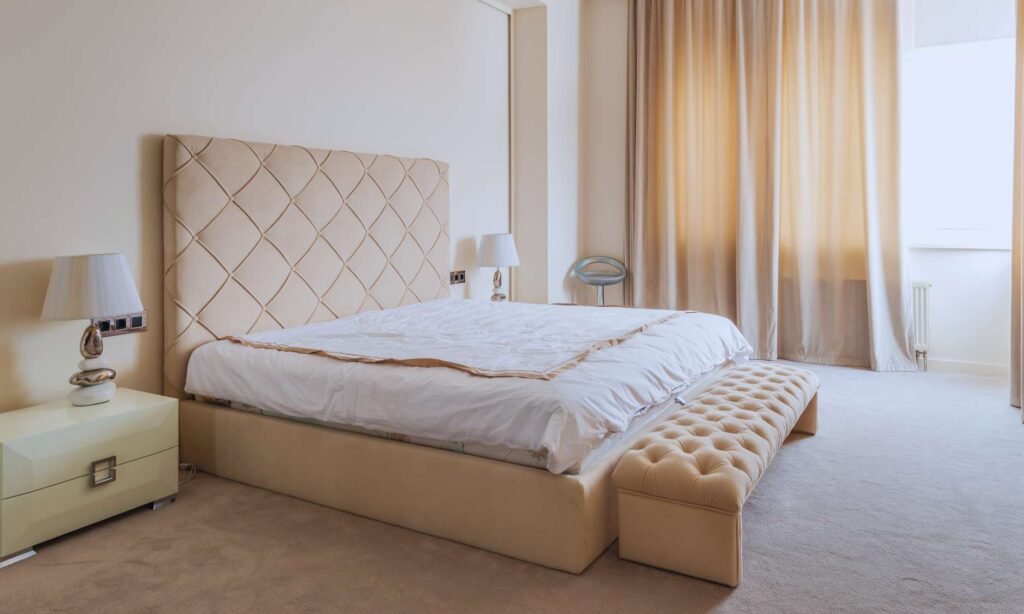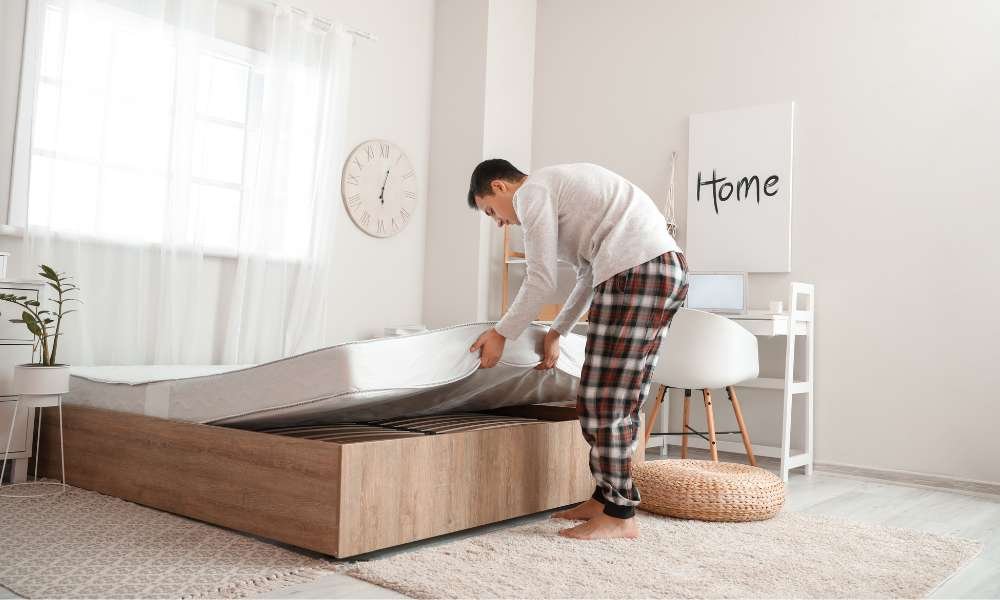Bed linens are essential for creating a comfortable and inviting sleeping environment. Understanding the different types of bed sheets is crucial for making informed choices that enhance your sleep quality. Among the various types of sheets, the flat cover holds a significant place. A flat sheet, also known as a top sheet, is a rectangular piece of fabric that lies between you and your blanket or comforter. It serves multiple purposes, including protecting your bedding and adding an extra layer of warmth. In this article, we will explore what is a flat sheet for bed, its uses, and why it is an important component of your bedding ensemble.
Definition of a Flat Sheet
A flat sheet, also known as a top cover, is a rectangular piece of fabric that lies between you and your blanket or comforter. Unlike fitted sheets, which are designed to snugly cover your mattress with elastic corners, flat covers are simply spread over the bed and tucked under the sides. This versatility makes them easy to fold and store. Common materials for Plane sheets include cotton, linen, and microfiber, each offering different levels of comfort, breathability, and durability. Flat covers serve multiple purposes, including protecting your blanket or comforter from dirt and providing an extra layer of warmth. They can also add a decorative touch to your bed, especially when you choose patterns or colors that complement your bedding set.
Historical Background of Flat Sheets

Flat sheets, also known as top covers, have a rich history dating back to ancient times. Originally, flat sheets were crafted from basic fabrics and used primarily for warmth and protection. As weaving techniques advanced, these covers became more refined and began to hold cultural significance, particularly in ancient Egypt and Rome, where they symbolized wealth and status. Over centuries, Plane sheets evolved, influenced by varying textile innovations and societal shifts. In the medieval era, they were often embroidered with intricate designs, reflecting their owner’s social standing. Today, flat covers are an integral part of modern bedding, offering both comfort and aesthetic appeal. Their traditional uses for layering and warmth have expanded to include decorative purposes, showcasing how flat covers have continually adapted to meet changing needs and tastes over time.
Purpose of a Flat Sheet
A flat sheet, also known as a top cover, serves several important purposes in bedding. Primarily, a Plane sheet acts as a barrier between you and the blanket or comforter, ensuring that these heavier coverings stay cleaner for longer. This helps in maintaining hygiene and reducing the frequency of washing bulky bedding items. Additionally, flat covers contribute significantly to comfort by providing a soft, smooth layer that enhances the sleeping experience. They are especially useful in temperature regulation, offering a lightweight cover during warmer months and an extra layer of warmth in cooler weather. The versatility and practicality of Plane sheets make them a staple in any bedding setup, ensuring both comfort and cleanliness.
Benefits of Using a Flat Sheet

Using a flat sheet offers numerous advantages for both sleep quality and bed maintenance. It acts as an additional layer of comfort, enhancing sleep quality by providing a smooth surface that feels pleasant against the skin. This extra layer also serves as a protective barrier for blankets and comforters, preventing them from direct contact with the body, which reduces the frequency of washing and extends their lifespan. Furthermore, flat covers contribute to the aesthetic appeal of a well-made bed. They can add a touch of elegance and neatness, creating a polished look that elevates the overall appearance of the bedroom. Incorporating a Plane sheet into your bedding routine is a simple yet effective way to enhance both comfort and style.
How to Properly Use a Flat Sheet
Using a flat sheet on your bed enhances comfort and hygiene. Follow this step-by-step guide to ensure your flat sheet is perfectly placed. First, lay the Plane sheet over your mattress, ensuring the top hem is aligned with the head of the bed. Next, tuck the sheet securely under the mattress at the foot of the bed, creating hospital corners by folding the excess fabric at a 45-degree angle before tucking it under the sides. Repeat this process along the sides of the bed for a smooth, snug fit. Avoid common mistakes such as leaving too much slack or tucking unevenly, which can cause discomfort and untidiness. For added security, you can use sheet clips or straps to keep the flat sheet in place. Properly using a Plane sheet ensures a neat, comfortable bed that enhances your sleep experience.
Flat Sheets vs. Fitted Sheets
Flat sheets and fitted sheets serve different purposes in bedding. A flat sheet, also known as a top sheet, lies between you and your blanket, providing an extra layer of comfort and protection for your duvet. Fitted sheets, on the other hand, have elastic corners that secure them to the mattress, ensuring a snug fit.
Key differences include their placement and function. Flat sheets offer versatility, allowing for easy layering and temperature control. They are also easier to fold and iron. However, they can come untucked during the night. Fitted sheets stay in place, providing a smooth sleeping surface but can be more challenging to fold and maintain.
Pros of flat sheets include added comfort and ease of washing. Cons are their tendency to shift. Fitted sheets stay put but may require more effort to handle. Use Plane sheets for layering and fitted sheets for a neat, secure bed setup.
Choosing the Right Flat Sheet

Choosing the right flat sheet for your bed is crucial for comfort and style. When buying a Plane sheet, consider the material. Cotton is breathable and soft, while linen offers a cool, crisp feel. For luxury, silk or satin are excellent choices. Size matters too; ensure the sheet fits your mattress properly. Thread count is another important factor; a higher thread count often means a softer, more durable sheet. Recommendations vary based on preferences; those with sensitive skin might prefer hypoallergenic materials. Popular brands like Brooklinen, Parachute, and Boll & Branch offer high-quality options. Product reviews can guide your decision, highlighting comfort, durability, and value.
Care and Maintenance of Flat Sheets
Care and maintenance of flat sheets are essential for their longevity and comfort. For best practices, wash your flat sheets in cold or warm water with a gentle detergent to prevent fabric damage. Avoid using bleach, as it can weaken fibers. After washing, air dry sheets or use a low heat setting in the dryer to minimize shrinkage. Store Plane sheets in a cool, dry place, ideally in a breathable bag to keep them fresh.
To prolong the lifespan of your flat sheets, rotate between multiple sets to reduce wear and tear. Regularly check for any signs of damage or fraying, and repair promptly. To remove stains, pre-treat affected areas with a stain remover before washing. For persistent odors, add a cup of white vinegar to the rinse cycle. These care practices will help maintain the softness and durability of your Plane sheets, ensuring a comfortable sleep environment.
Conclusion
In conclusion, a flat sheet for bed plays a crucial role in enhancing comfort and hygiene. Flat sheets act as a barrier between you and your blanket, keeping your bedding cleaner for longer. They add a layer of softness and style to your bedroom decor, making your sleeping environment more inviting. Selecting the right flat sheet can significantly improve your sleep quality. Consider factors like material, thread count, and size to ensure you get the best fit and feel. We encourage you to choose a high-quality Plane sheet to elevate your sleeping experience. Share your experiences or questions about flat sheets in the comments below.



